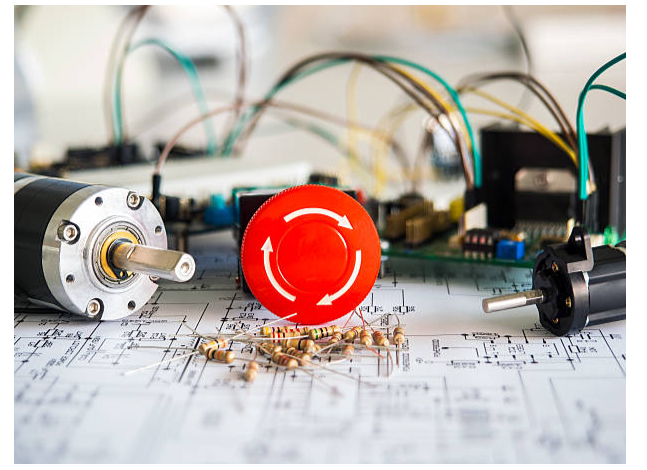A Detailed Guide to Photoelectric Sensor Diagrams: How They Work
Photoelectric sensors are one of the most vital components when it comes to industrial automation that enables high speed, accuracy and reliability. These sensors include both active and passive types, in that they can identify the existence or lack of an object or its distance using beams of light and are widely used in automatic control systems. To gain comprehension about the general working of these sensors and in understanding where it fits in industrial automation systems, it is helpful to analyze the two major types of photoelectric sensors through the help of diagrams. This article is a guide on understanding the principle of how photoelectric sensors work, an understanding of diagrams, and why they are essential for industrial automation supply.
Photoelectric Sensor
A photoelectric sensor is an equipment that can sense the existence or non-existence of an object through illumination. These sensors usually include the emitter that generates the light and the receiver that detects alteration of the beam of light as the object vibrates across the path of the light. Photoelectric sensors are popular in automation due to its no-contact feature that makes it suitable for fragile or high speed objects. There are numerous types of these sensors and within them, they work by interrupting, reflecting or absorbing the light beam. It is difficult to imagine most segments of Industrial Automation Supply in sectors like packaging, assembly and even material handling without them due to their accuracy, flexibility and non-contact operations. Also, with photoelectric sensors there are possibilities where other sensors cannot operate including dusty areas, high vibration areas, and areas sensitive to change in temperatures.
How to Read a Photoelectric Sensor Diagram
Functioning of a photoelectric sensor is well explained with the help of a photoelectric sensor diagram that integrates the sensor into the automation system. In the diagram, positions of light source or emitter, the object and the receiver are normally indicated with the means of showing direction of the light beam and the effect on the object. For instance, the diagram illustrating through-beam sensors displays the emitter and the receiver on opposite sides of the light beam. Whenever an object interferes with this beam, then the sensor responds. In retro-reflective sensors, there is an additional figure that shows that the beam is reflected back towards the sensor. In the diagrams for diffuse reflection sensors, the light is reflected to the receiver by the object. It empowers engineers to place sensors appropriately and solve problems arising in automation systems appropriately. The diagram also makes it easier to identify how it is powered and how its outputs are connected, critical in integrating the sensor into large-line automation systems.
Why Photoelectric Sensor Diagrams Are Important
These diagrams appear as basic documents that help engineers to configure and develop the best suction sensors in an industrial automation system. These diagrams provide clean and clear vision for installing, orienting and interfacing the sensor with the rest of the automation systems. The diagrams assist the engineers and technicians in understanding the relationship between the emitter and the receiver in that they are used to indicate where an object should be placed for it to be detected most effectively. Three diagrams are provided on the site, and learning from it helps users to fix the sensors correctly, in the right position or distance so that they do not get misaligned or make wrong detection. Moreover, diagrams are irreplaceable when it comes to problem-solving—whether it be sensor misalignment or beam disruptions; crucial problems that can be solved without affecting the system’s performance. In industrial automation supply systems, these diagrams hold a key importance to sustaining precision and speed. In complicated automation projects, diagrams can also be used to plan the positions of sensors, in order to avoid empty or overlapped areas of detection.
Applications of Photoelectric Sensors in Industrial Automation
Opto-proximity sensors, or photoelectric sensors, are one of the most common types of sensors, which finds its application in a great number of industrial automation processes because they do not come into physical contact with the object being detected. They are used extensively in assembly lines where the position of parts is sensed by detectors, to enable perfect positioning or treatment. In packaging systems, photoelectric sensors are used to guarantee that products are well positioned for sealing, labeling or sorting. These sensors also become useful in detecting quality of products by ascertaining if a certain part is missing or if any product has any defect as items move on a conveyor. These sensors are highly perishable depending on a number of factors which include; they can work under extreme conditions, say dusty or moist environments and therefore are capable of serving the industrial automation supply across manufacturing industries, food and processing industries, and pharmacy among others. Its flexibility in different sensing modes guarantees they can be used to meet the demands of complex automation processes. In addition, photoelectric sensors are applied in avoiding an impact by the automation vehicles, improving safety measures in tools, and controlling the store inventories.
Conclusion
Photoelectric sensors are essential parts of many industrial automation systems, known for their accuracy and effectiveness in applications that require non-contact control of object presence. It is crucial for anyone managing automation systems design and implementation, or involvement in the maintenance of such systems to comprehend various forms of photoelectric sensors as well as learn to interpret their diagrams. Photoelectric sensor diagrams are beneficial when used in configuring the system or identifying a problem because such diagrams give a visual understanding of the general operations of these sensors in a system. Forging an integral supporting infrastructure for the overall industrial automation, these sensors improve functional capacity, durability, and productivity of automated equipment throughout numerous applications. With the understanding of how to read these diagrams, engineers as well as technicians can improve how they place sensors, how the sensors will work and how they will be combined to help the functioning industrial processes become more effective. Since the sensors will be relied upon when industries change with time the advanced effective and innovative automation solutions will be propelled forward thereby increasing operations success and precision.





